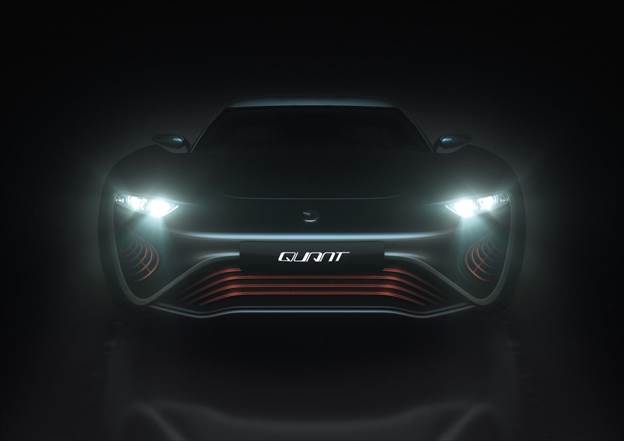Now for something a little different: a
super sedan featuring new technology that could represent a quantum leap for
automotive energy storage systems.
Undoubtedly one of the more curious
technological premieres that the automotive industry has showcased so far this
year has been that of the Quant e-Sportlimousine. A testbed for
Liechtenstein-based NanoFlowcell, an R&D developer founded in late 2013,
the role of this first tech demonstrator from the company is to be “a research
vehicle for road-testing innovative energy storage systems, focusing especially
on developments and improvements in flow cell battery technology”, explains
technical director Nunzio La Vecchia.

If
ever there were a vehicle to arise from left field, the Quant e-Sportlimousine
would be it. Digging in the archives reveals the car’s origins starting in 2003
as the brainchild of the La Vecchia brothers.
Automotive use of redox flow-cell batteries
is by no means a new idea but it has long been dismissed by many in the
industry because of problems relating to weight and generally poor charge
density, as well as the rather awkward matter of having to refill with charged
electrolytic fluid. However, NanoFlowcell and La Vecchia claim to have come up
with a novel cell design and an electrolyte breakthrough that realizes a high
number of charge carriers that tackle the first two issues – and with redox
flow-cell batteries now coming into more common use in domestic and renewable
energy storage applications – it’s not entirely fanciful to suggest that some
kind of electrolyte-swapping and electrolyte-charging infrastructure could
develop in the near future. After all, as Tesla has shown with its Supercharger
network, developing solutions at the more exclusive and boutique end of the
market is not as problematic or cost-sensitive as trying to resolve refuelling
or recharging issues for large numbers of mainstream customers.

The
heart of the car utilizes a three-tank system that stores two types of liquid
electrolytes — one positively charged, the other negatively.
The e-Sportlimousine’s batteries combine
elements of accumulator cells and fuel cells, and comprise two cells, separated
by a membrane through which the charge passes. The liquid electrolyte, stored
in two 200-liter on-board tanks, circulates through the cells, and parallel
oxidation and reduction processes generate electrical power, stored in two
supercapacitors, to drive the car’s four in-wheel, three-phase induction
motors. These supercapacitors also capture energy through regenerative braking.
“The advantages of the NanoFlowcell lie in its high-charge density,
high-performance density, and its light weight. Furthermore, it contains no
harmful substances, no moving parts and it is very efficient,” adds La Vecchia.
Effective Energy Carrier
Developed at NanoFlowcell’s Digilab in
Zurich, the battery cells are showing a continuous output of 30kW at a nominal
voltage of 600V and a current of 50A in early simulation assessments, and are
said to remain stable through 10,000 charging cycles with almost no
self-discharging or capacity loss. They are also claimed to be thermally
stable, producing negligible waste heat, and are less flammable than
lithium-ion batteries. Yet it is arguably the potential synergies between car
and renewable grid that are the most interesting element, with effective use of
the car as an energy carrier.

It
sounds easier than it likely is, but upon inspection of its nano FLOWCELL
powerplant, it just might have a shot. It’s a 912-horsepower electric car.
The energy density of the batteries is said
to be more than five times greater than that of existing flow cells, and five
to six times that of current lithium-ion technology’s 600Wh/litter. The
e-Sportlimousine is thus claimed to have a range of up to 600km (372 miles)
between electrolyte swaps.